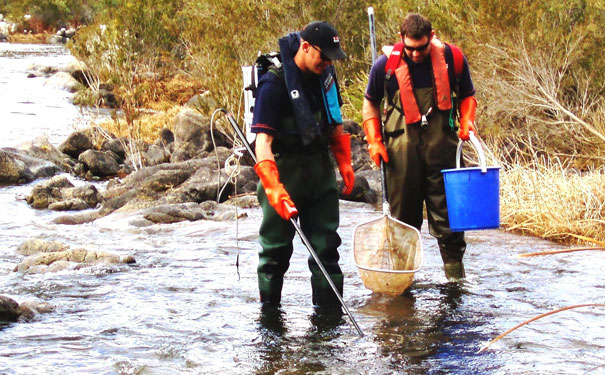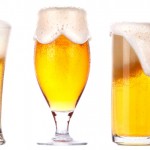
Fisheries technicians Jarrod McPherson and Mick Bettanin sampling a site in the Snowy River with a backpack electrofisher during the project. Image: Leo Cameron, NSW I&I
The declining Australian bass population is making a comeback through restocking.
More than 200,000 Australian bass fry have been released into the upper reaches of the Snowy River as part of a restocking program funded by the Southern Rivers Catchment Management Authority .
Southern Cross University researcher Leo Cameron says that the Australian bass were once abundant in the Snowy River. Reports show that the species was historically caught by anglers as far upstream as Dalgety (approximately 328 kilometres from where the Snowy River flows into Bass Straight).
“Unfortunately Australian bass numbers have declined and it has now been estimated that the last successful year of natural recruitment was 1987 in the Snowy River. Reduced flows are widely believed to have impacted largely on the capacity and frequency of natural spawning events leading to the population decline.”
The hatchery reared fry, measuring between 15 to 25 millimetres, were released between 2007 and 2009. Preliminary results from the restocking program suggests that the bass are slowly returning to the Snowy River, with stocked bass measuring up to 120 millimetres have being collected from waterholes and low flow areas at regular intervals.
Researchers are currently determining whether the Australian bass collected are hatchery individuals from the stocking program or are natural recruits. Researchers are also assessing the environmental tolerances of the juvenile bass to determine the suitability of conditions for future stockings, including winter climatic conditions on the upper Snowy River.
Mr Cameron says that an improved understanding of the growth, behaviour and survival rates of the stocked individuals will lead to more successful restocking programs in the future.

Australian bass fry collected from the upper Snowy River several days after a major stocking event. Image: Leo Cameron, NSW I&I
Source: Department of Primary Industries






